What methods of electricity generation use the most water?
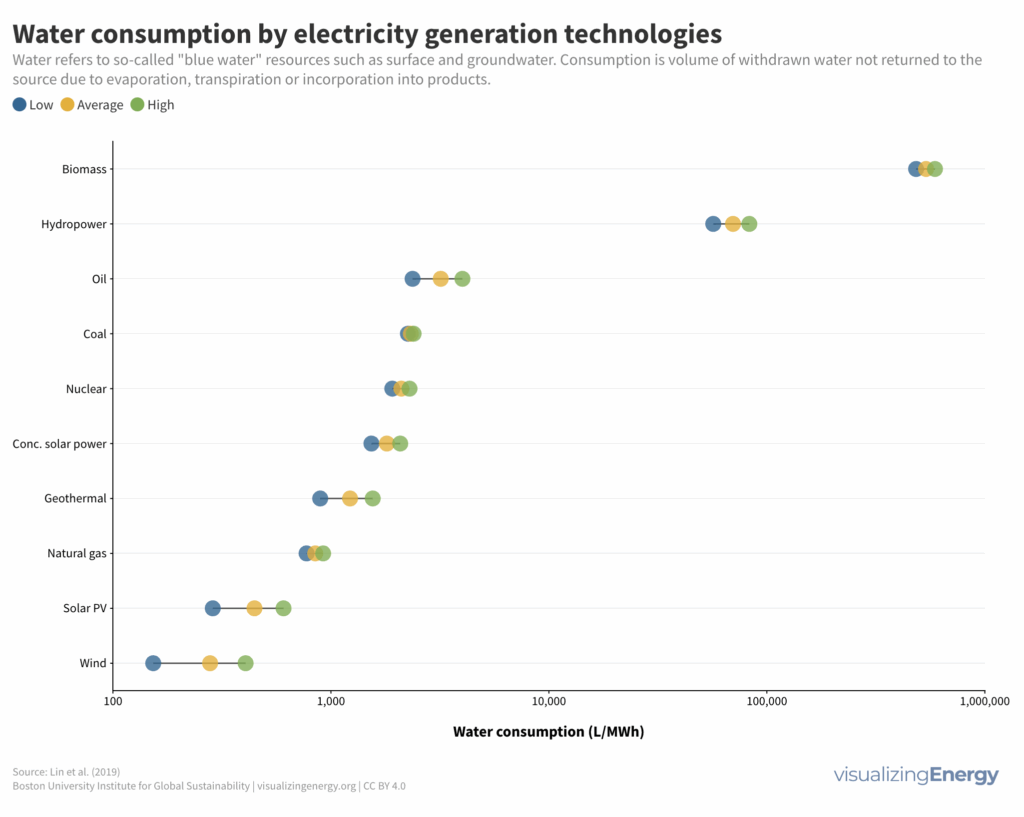
In the twentieth century, global energy use grew tenfold, and global water use grew sixfold. Population growth and rising affluence are expected to drive continued increases in the demand for energy and water. The water-energy nexus refers to the fact that the production and consumption of water and energy are closely interconnected. All forms of […]
Watch the history of hydropower plants in the United States
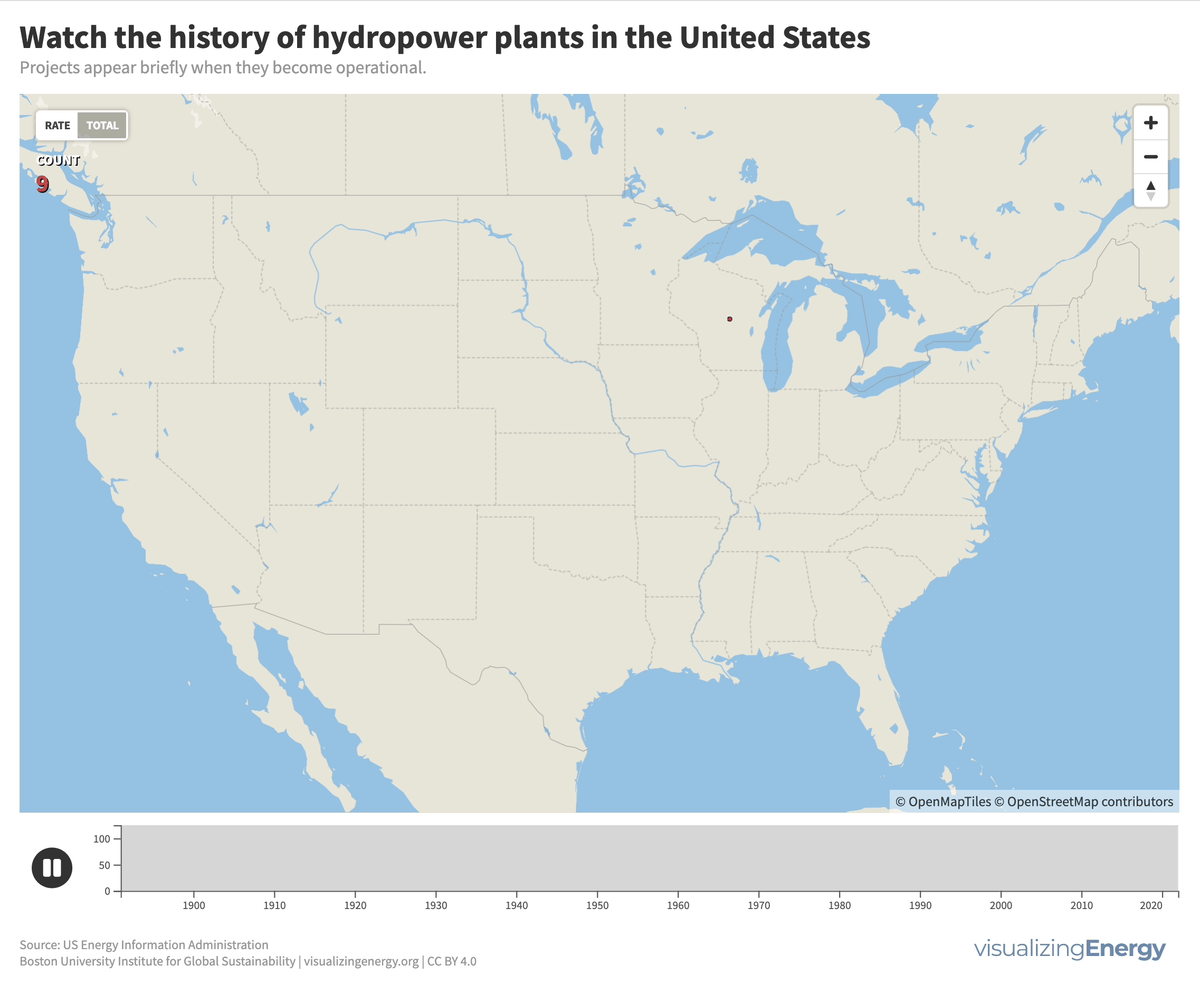
More than 4000 hydroelectric dams have been built in the United States since the late 19th century, representing six percent of all-time additions to electric generation capacity from all sources.
Peak shaving facilities in the United States

A peak shaving facility is an energy system that balances fuel demand fluctuations, particularly for natural gas during peak usage times. It stores liquefied natural gas (LNG) at low demand and releases it when needed. Commonly found in metropolitan areas and regions with pipeline limitations, these facilities aid in preventing shortages and price spikes.
Electricity generation from nuclear power

In 2024, 440 nuclear power reactors operated in 32 countries, generating 10% of the world’s electricity. The US, China, France, Russia, and South Korea are the top generators. France leads in nuclear power usage (63%), followed by Slovakia, Hungary, Belgium, and Slovenia. Ukraine’s nuclear operations were impacted by the 2022 Russian invasion, causing fluctuating reactor activity.
What countries have the greatest hydropower capacity?

Dams serve various purposes such as navigation improvement, flood control, and electricity generation. There are over 40,000 dams worldwide, with significant hydroelectric capacity. The environmental impact of these large projects, including disturbance of ecosystems and displacement of communities, must be carefully assessed and balanced with their low-cost and low-carbon benefits.
Where are coal power plant projects being cancelled?
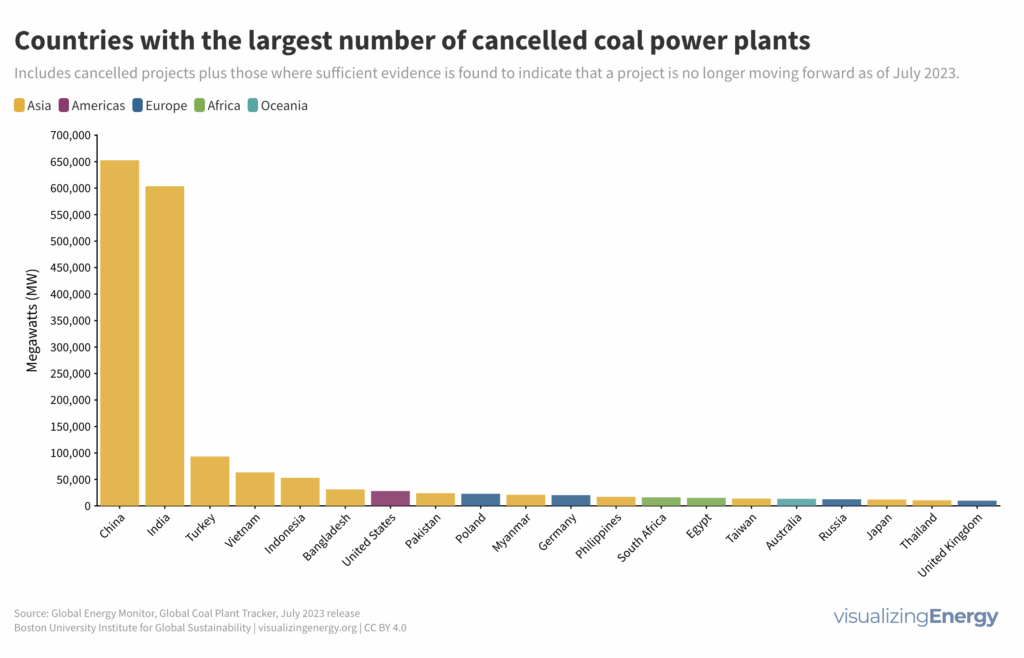
The coal power plant industry’s state is reflected in cancellations and shelved projects, concentrated in Asia (e.g., China, India). China’s paradoxical coal investment includes building new capacity and decommissioning old plants due to renewable energy growth. In the U.S., 23% of coal capacity will retire by 2029 due to competition from natural gas and renewables.
Watch the history of natural gas power plants in the United States
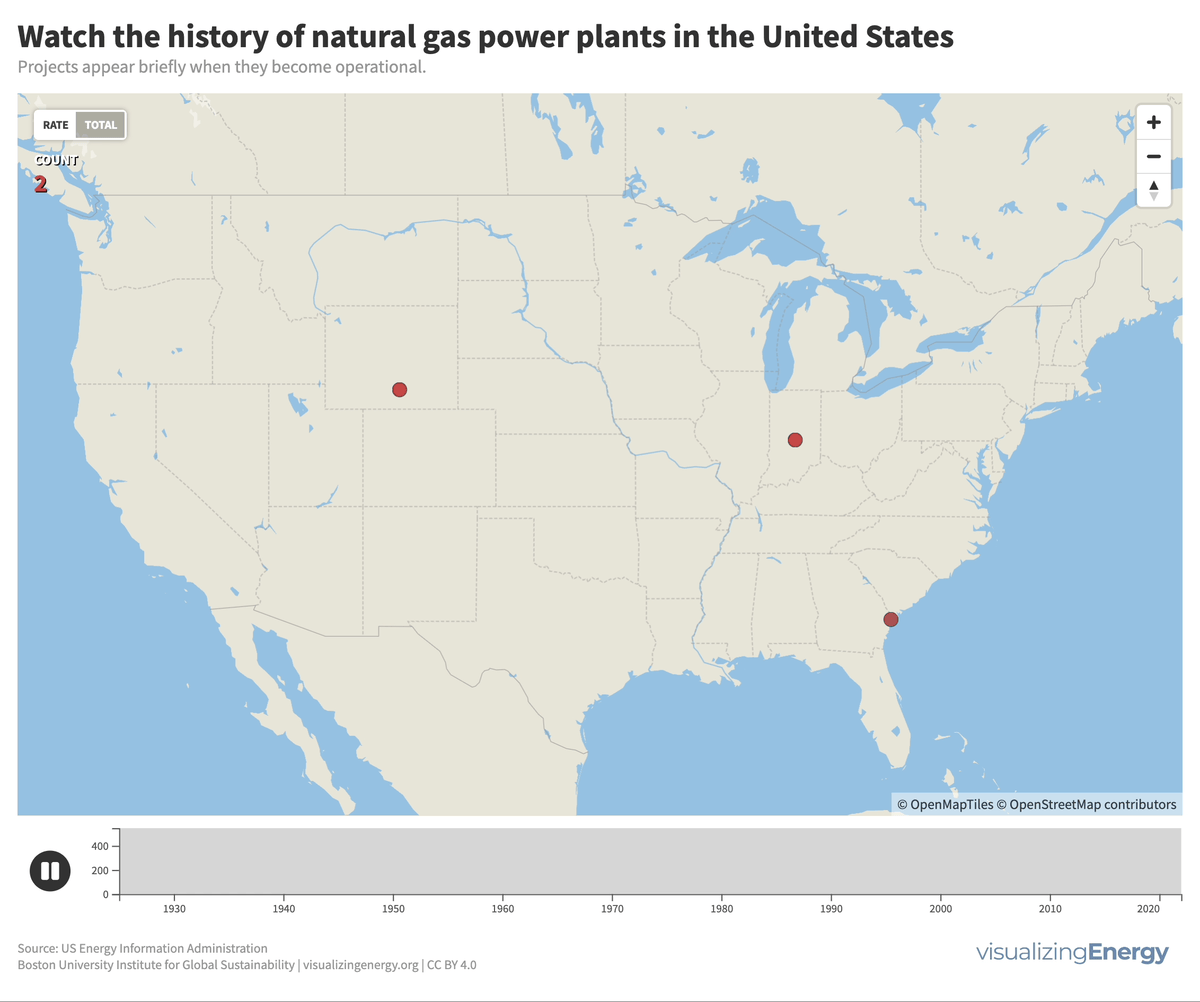
Since the 1920s, natural gas-fueled power plants grew gradually. After WWII, advancements in technology and fracking increased US electricity generated by natural gas from 16% in 2000 to 38% in 2021.
Watch the history of waste-to-energy power plants in the United States
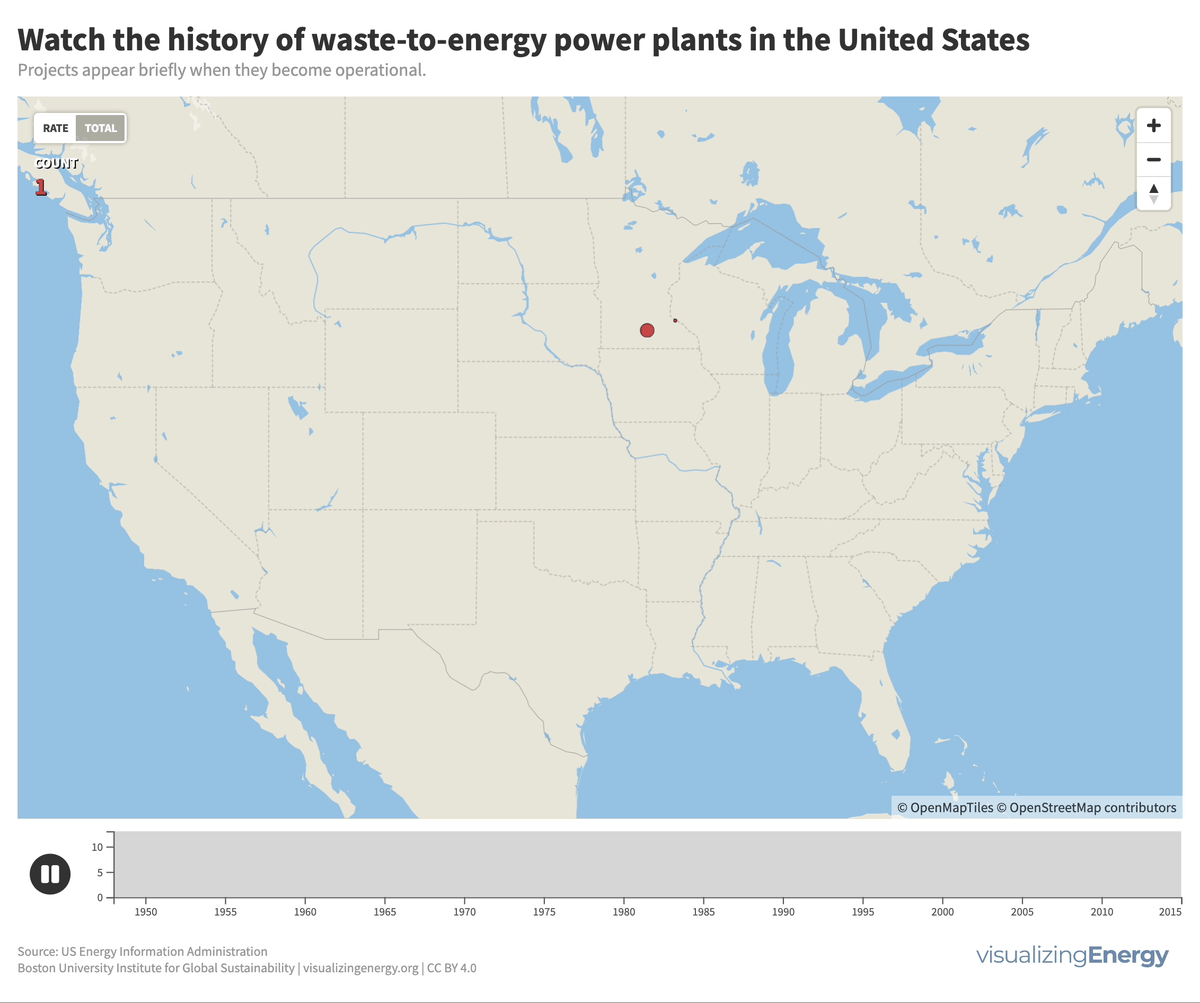
Waste-to-energy (WTE) plants in the US burn municipal solid waste to generate electricity, contributing less than one percent of the total. Initially developed due to landfill space scarcity, the renewable classification is disputed due to non-biogenic waste. Few new facilities have been built since the 1990s due to opposition, high costs, and increased focus on recycling and waste reduction.
Explore the world’s hydropower plants in 2022
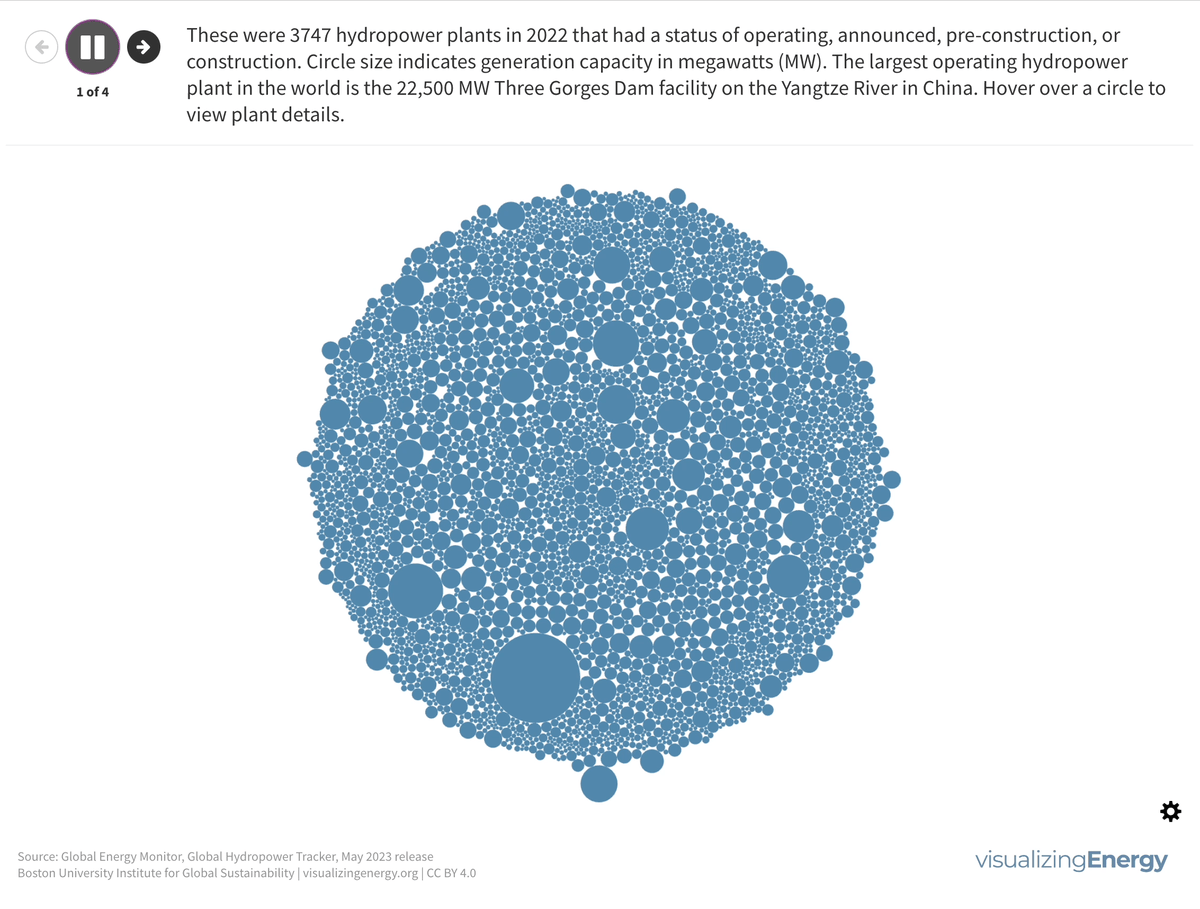
Hydropower, a pioneer in grid-scale electricity generation since the late 19th century, now provides 17% of global electricity, surpassing nuclear, wind, solar, bioenergy, and geothermal combined. While the US and Europe have well-established capacity with limited room for expansion, China, India, Africa, and South America are developing new projects to meet rising electricity demand and reduce greenhouse gas emissions.
How has the technology of hydropower changed since 1898?
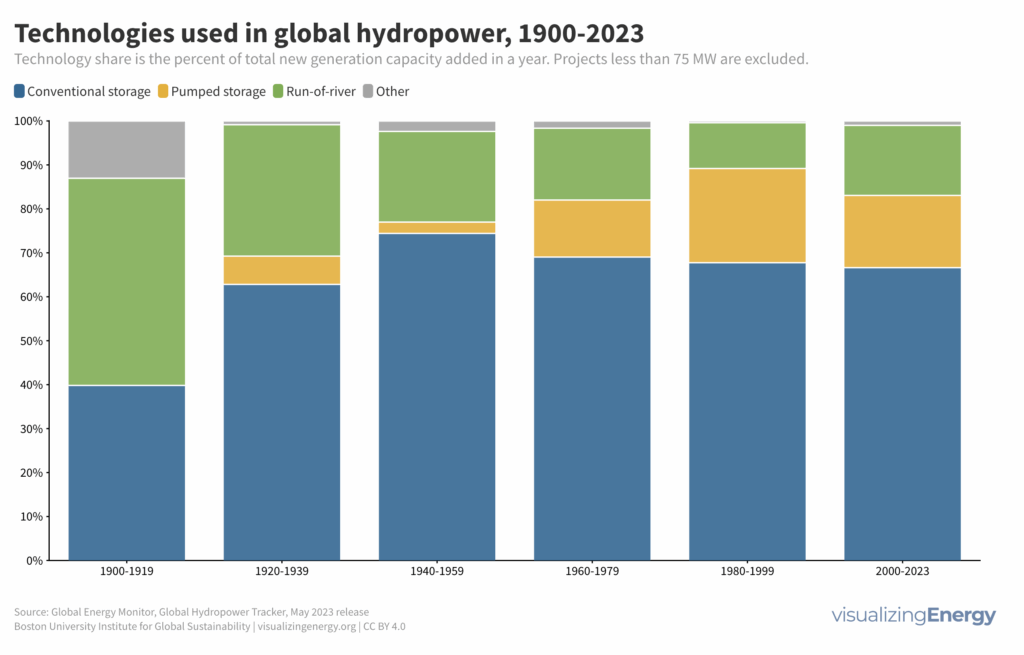
Hydropower plants utilize different technologies to generate electricity. Impoundment facilities use a dam to create a reservoir, releasing water through turbines. Run-of-river plants channel river water to generate power while pumped storage hydropower stores energy by moving water between reservoirs of different elevations. Each technology has its advantages and impacts on the environment and infrastructure.
